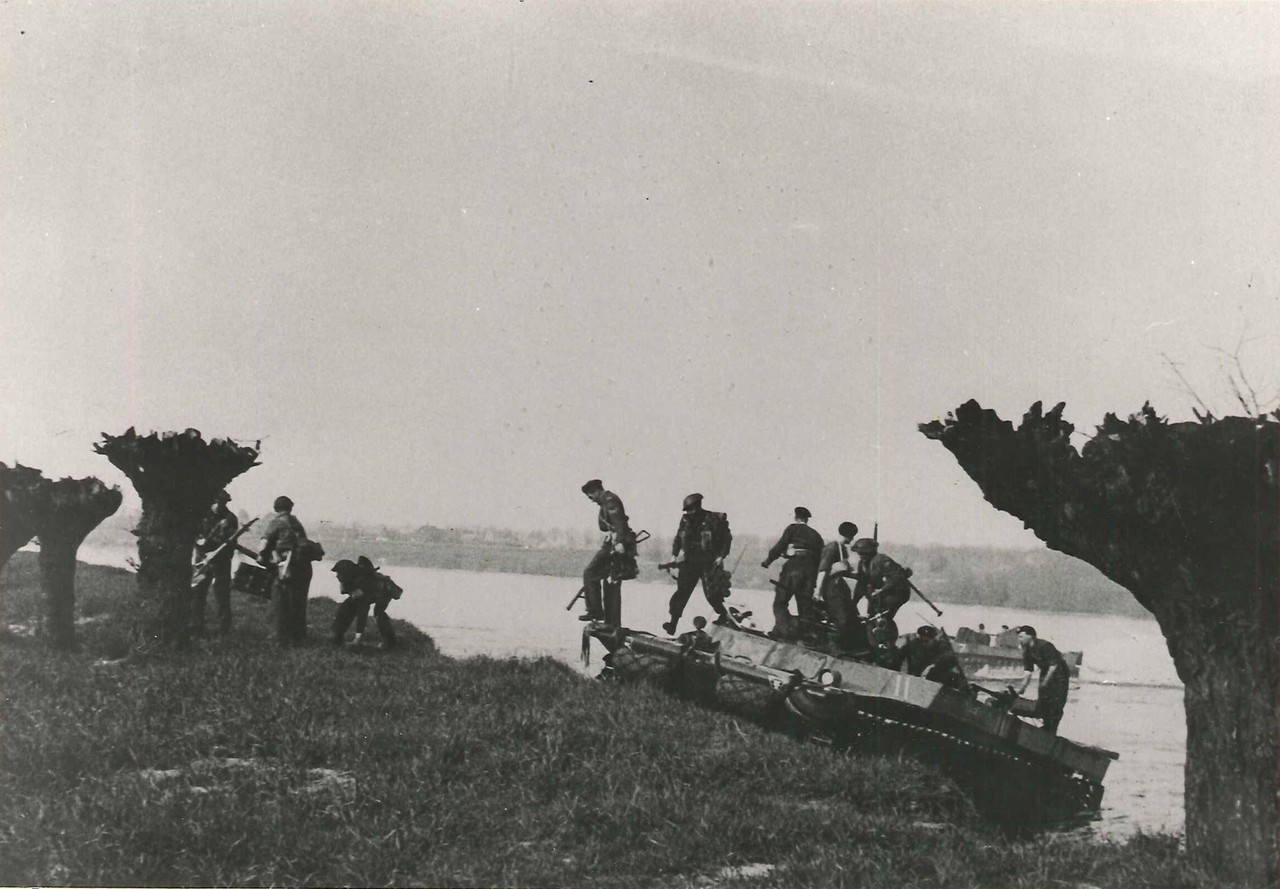On April 11 at 4:30 PM, the first buffalo went into the IJssel, Operation Cannonshot had started. The crossing lasted 7 minutes without receiving enemy fire. After the battalions were transferred, pontoon bridges were started to build. At the same time, a ferry brought the first medium-duty Sherman tanks from the 1st Hussars to support the infantrymen. The infantrymen had already reached their first goal, “De Kribbe” and “De Weerd” farm. At this stage the enemy easily withdrew. The situation changed at the villages of Klarenbeek and Voorst. The bridgehead in making came under heavy German artillery and mortar fire. Which, according to the Canadian reports, resulted in in 17 casualties among the engineers.
It did not take long to build the bridge. At 02:00 on April 12, the bridge and two pontoons were ready. This allowed brigades 1 and 3 and the heavy vehicles to cross the IJssel. The entire 1st Canadian Infantry Division entering the Wilpse banks was the sign that the liberation of the town of Voorst and Appledorn had started.
The pontoon bridge between Gorssel and Wilp was a so-called “Class 9” bridge. This was named “Can of Worms Bridge” as it was reminiscent of a jar with wriggling piers. Later one of the officers arrived with a sign with the text “Poco-Poco Bridge” or well the “Ietsie Pietsie” bridge. The builders could harly appreciate all of this and a riot arose. This riot went so high that the order from above came that both signs could remain. The first name was still removed on 13 April 1945. Therefore, the bridge that led to the liberation of the West Netherlands entered history as the “Poco-Poco” bridge
